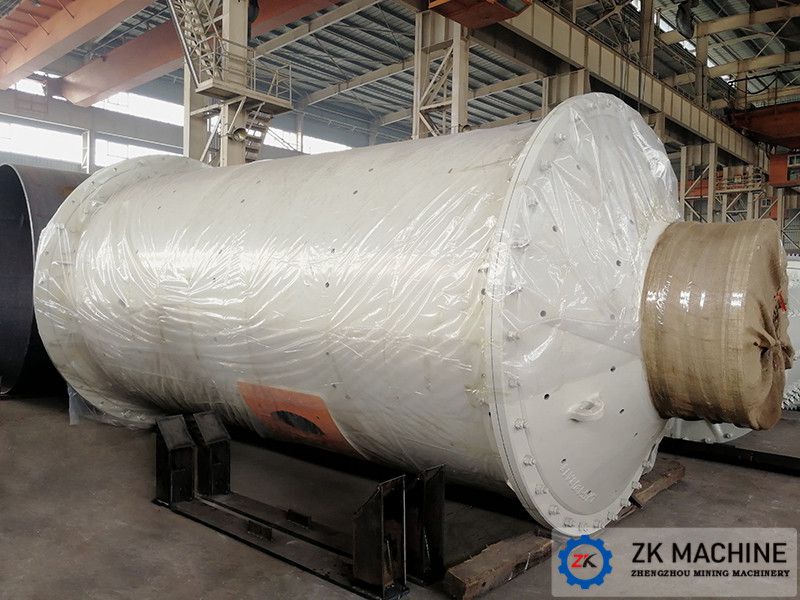Wet Type Ball Mill VS Dry Type Ball Mill
Date:2021-01-08 15:50:41
Author:admin
Views:
166
The difference between wet ball mill and dry ball mill is mainly reflected in three aspects:
I. Different working principle;
When the dry ball mill is in operation, the material enters the first storehouse of the mill uniformly by the feeding device through the feeding hollow shaft screw. The storehouse is equipped with stepped lining board or corrugated lining board and steel balls of different specifications. The centrifugal force generated by the rotation of the ball mill barrel will bring the steel ball to a certain height and then fall down, thus crushing and grinding the material.
After the material is roughened in the first bin, it is entered into the second bin through a single layer compartment plate, which is equipped with flat lining plates and steel balls of different specifications to further grind the material. Finally, the qualified materials are discharged through the discharge grates to complete the grinding operation.
Wet ball mill works on the same principle as dry ball mill, but there are some differences. Wet ball mill needs to add an appropriate amount of water or anhydrous ethanol in the grinding process, which means that the grinding concentration has certain requirements. The amount of water depends on the nature of the material. Qualified materials are discharged out of the barrel through the discharge part, and unqualified materials are returned to the wet ball mill for re-grinding.
II. Different structure;
Both the dry ball mill and the wet ball mill include the main parts such as the feeding part, the discharging part, the rotary part and the transmission part (reducer, pinion, motor, electric control).
The difference lies in that the structure of the dry ball mill is more complex than that of the wet ball mill. The discharge port is in the shape of a straight cylinder. At the same time, it is equipped with an air inlet device, a dust exhaust pipe and a dust collector, which is also determined by its working principle. Wet ball mill structure is simple, do not need to add too many auxiliary accessories, the outlet is horn shaped, built-in screw device for convenient discharging.
III. Different scope of application
In general, the dry ball mill is suitable for all kinds of metallic and non-metallic minerals, including materials that will react with water, such as cement, marble and other building stones, or products that require storage and sale in the form of powder. In addition, if the plant is located in a dry area, water resources are scarce, for the purpose of water conservation, the dry ball mill can be used.
Wet ball mill is applicable to a wide range, can deal with a variety of metallic ore, non-metallic ore, common including gold, silver, copper, iron ore, molybdenum, phosphate, feldspar, fluorite and so on. Wet ball mill can be used as long as the water does not affect the quality of the final product. The ore that needs to be treated by separation is usually treated by wet ball mill.
It should be noted that, in the use of wet ball mill, it is necessary to determine the proportion of steel ball, material, water through the dressing test, in order to ensure the ideal grinding effect. As for the choice of which grinding equipment, or depends on the ball mill's follow-up work, product nature and production costs.
The dry ball mill adopts grate type grinding tail discharging, discharging is smooth, no swelling and grinding phenomenon, the barrel does not need cooling, long service life, low failure rate.
Wet ball mill has better performance, higher grinding efficiency and lower water content requirement of ore. In addition, it has less auxiliary equipment and simple material transportation device, so its investment is about 5%-10% lower than dry ball mill.
From the economic effect of grinding operations to consider, most concentrators will use wet ball mill, because wet ball mill material adaptability, continuous production, crushing ratio. Wet ball mill has higher fineness and better beneficiation effect.
These are the three main differences between a dry ball mill and a wet ball mill, and how to choose between them. Only by finding the suitable grinding mode of materials, can the ball mill run with high quality and efficiency. Two kinds of grinding equipment have their own advantages. We still make a rational choice after considering the nature and characteristics of materials, as well as the requirements for products and working environment.

